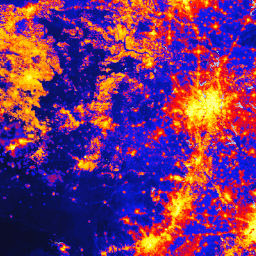
- Доступность набора данных
- 2016-01-01T00:00:00Z–2016-12-31T00:00:00Z
- Поставщик наборов данных
- Партнеры по науке сохранения природы
- Каденция
- 1 год
- Теги
- , ТНК
Описание
Глобальный набор данных об изменениях, внесённых человеком (gHM), предоставляет кумулятивную оценку антропогенного воздействия на земную поверхность с разрешением 1 квадратный километр. Значения gHM варьируются от 0,0 до 1,0 и рассчитываются путём оценки доли изменённой площади заданного участка (пикселя), а также предполагаемой интенсивности изменений, связанных с определённым типом антропогенного воздействия или «стрессовым фактором». 5 основных антропогенных стрессовых факторов, наблюдавшихся около 2016 года, были картированы с использованием 13 отдельных наборов данных:
- населенные пункты (плотность населения, застроенные территории)
- сельское хозяйство (пахотные земли, животноводство)
- транспорт (магистральные, второстепенные и двухпутные дороги; железные дороги)
- добыча полезных ископаемых и производство энергии
- электротехническая инфраструктура (линии электропередач, ночное освещение)
Дополнительную методологическую информацию см. в статье. Этот ресурс был перепроецирован в систему координат WGS84 для использования в Earth Engine.
Группы
Размер пикселя
1000 метров
Группы
| Имя | Единицы | Мин. | Макс | Размер пикселя | Описание |
|---|---|---|---|---|---|
gHM | км^2 | 0 | 1 | метров | глобальная человеческая модификация |
Условия эксплуатации
Условия эксплуатации
Цитаты
Кеннеди, К.М., Дж.Р. Оуклиф, Д.М. Теобальд, С. Барух-Мердо и Дж. Кизекер. 2019. Управление серединой: изменение приоритетов охраны природы на основе глобального градиента антропогенных изменений. Global Change Biology 00:1-16. doi:10.1111/gcb.14549
Исследуйте с Earth Engine
Редактор кода (JavaScript)
var dataset = ee.ImageCollection('CSP/HM/GlobalHumanModification'); var visualization = { bands: ['gHM'], min: 0.0, max: 1.0, palette: ['0c0c0c', '071aff', 'ff0000', 'ffbd03', 'fbff05', 'fffdfd'] }; Map.centerObject(dataset); Map.addLayer(dataset, visualization, 'Human modification');
